Subscribe to our ▶️ YouTube channel 🔴 for the latest videos, updates, and tips.
Measurement of Capacity
We will learn basic concept of measurement of capacity.
The amount of water or any liquid that a vessel can hold is called its Capacity.
The larger vessel can hold more water than a smaller vessel.
We can measure capacity of one vessel by using another vessel.
Circle the vessel in each set which holds more water.
Arrange the vessels in the order from smallest to the largest capacity.
We know that capacity means how much a vessel can hold. A cup can be filled with 20 spoons of water means that capacity of cup in 20 spoons.
We can measure the capacity of a vessel by filling it up
with water or any liquid using another vessel.
Colour the number of vessels needed to fill the given vessel. One has been done for you.
Look at these jugs.
How much water do you think will fill up the bigger jug?
Let us start filling up the smaller jug with water from a water tap.
Put the water of smaller jug into the bigger one. Repeat and count how many times you do this till the bigger jug is full of water. If you did this 5 times, then we say that the capacity of bigger jug is 5 times the capacity of smaller jug.
|
Capacity of a container is the amount of water or some other liquid, like milk, that it can take to be full. Look at the bottle and the jug on the right. We use both of them to store water, milk, etc. |
Which one can hold more water?
|
Fill the bottle with water using a small mug. We need 2 mugs to fill the bottle. Now fill the jug. We need 6 mugs to fill the jug. So the jug can hold more water than the bottle. |
We say the jug has greater capacity than the bottle.
If your Mom wants to fill your bathtub with water, which container will she use?
Oh! Yes, she will prefer to use bucket. Bucket will hold more water than the mug. She will pour many buckets full.
Which container holds more water-left, middle or right?
Answer: Right
Which bottle is full-the one on the left or the one on the right?
Answer: Right
Suppose a guest visits your home. He says that he is feeling very thirsty. In which of the following glasses will you serve him the water?
Answer: 1
Which glass will you offer to the guest who is of your age?
Answer: 4
Questions on Measurement of Capacity:
1. Tick the vessel in each set that can hold more milk.
2. Tick the vessel which is not filled to it’s full capacity.
3. Tick the vessel you will use to measure the capacity.
4. Write T for true and F for false.
(i) We can measure liquids using a vessel.
(ii) Capacity of vessel can be measured using another vessel.
5. Match the following:
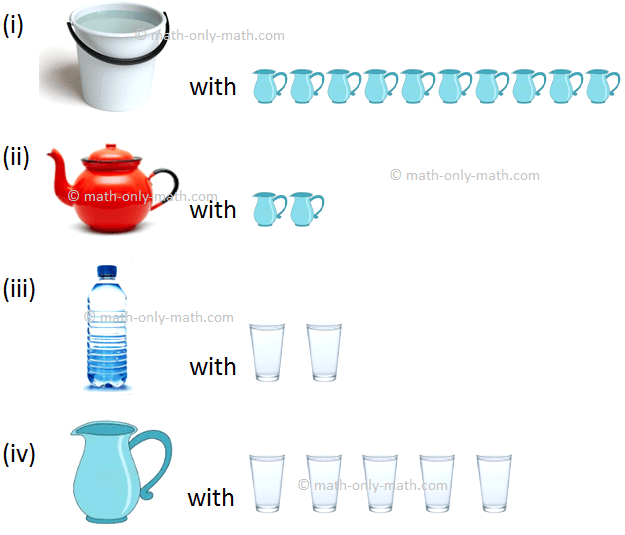 |
(a) capacity of this bucket is 10 mugs. (b) capacity of this pot is 10 mugs. (c) capacity of this bottle is 2 glasses. (d) capacity of this jug is 5 glasses. |
6. Look at this picture and choose the correct word to answer the question.
(i) Capacity of the bottle is ………….. than that of the pot. (more / less)
(ii) Capacity of the pot is ………….. than that of the bottle. (more / less)
7. Aaron is able to fill a jug with 5 cups of water. Nancy fills the same jug with 10 cups of water. Think and answer whose cup holds less water?
8. Ron is pouring water from his water battle to a glass, he finds that some more water is left in the bottle. He fills one more glass from his water bottle. There is no more water left in the bottle. Think and answer what is the capacity of the bottle.
First Grade Math Activities
From Measurement of Capacity to HOME PAGE
Didn't find what you were looking for? Or want to know more information about Math Only Math. Use this Google Search to find what you need.





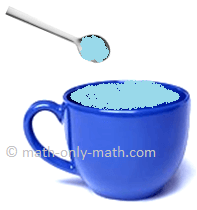
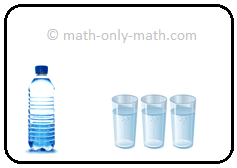

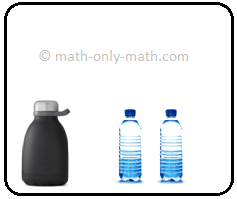
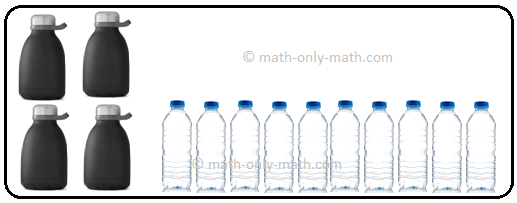
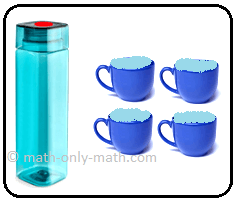
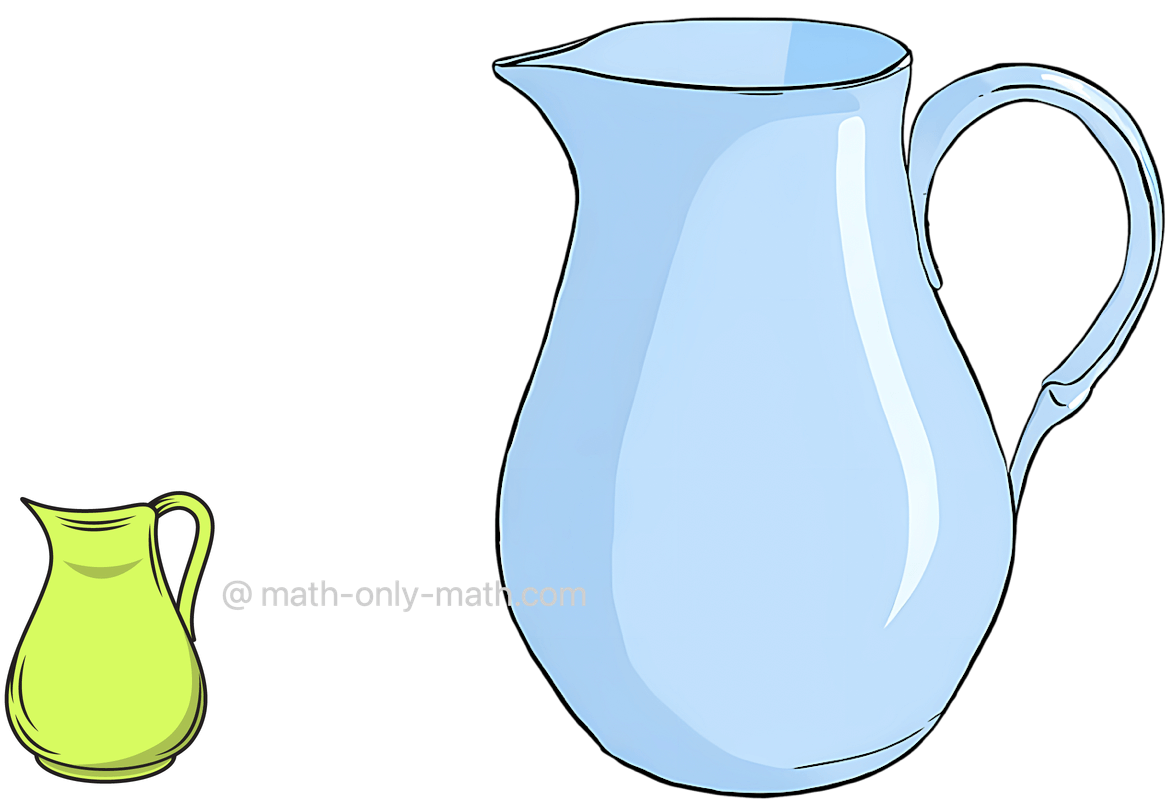
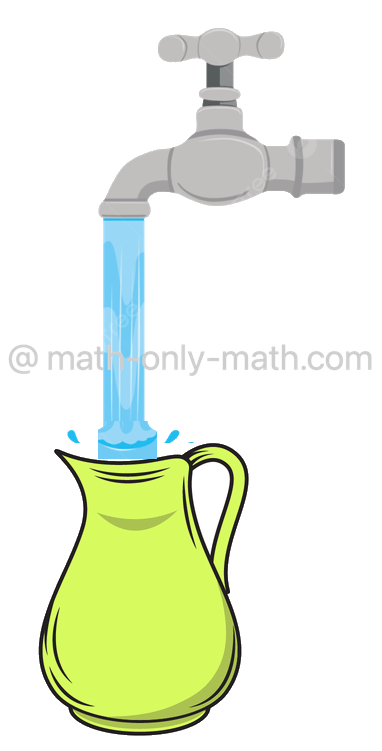
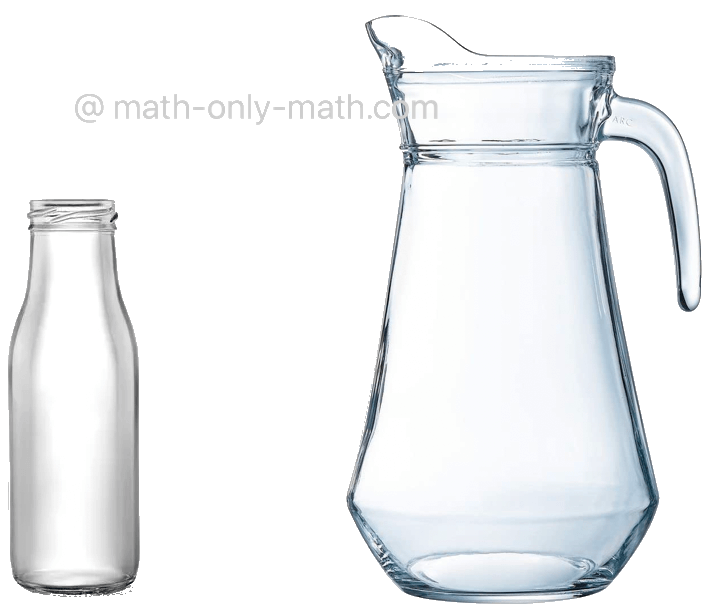
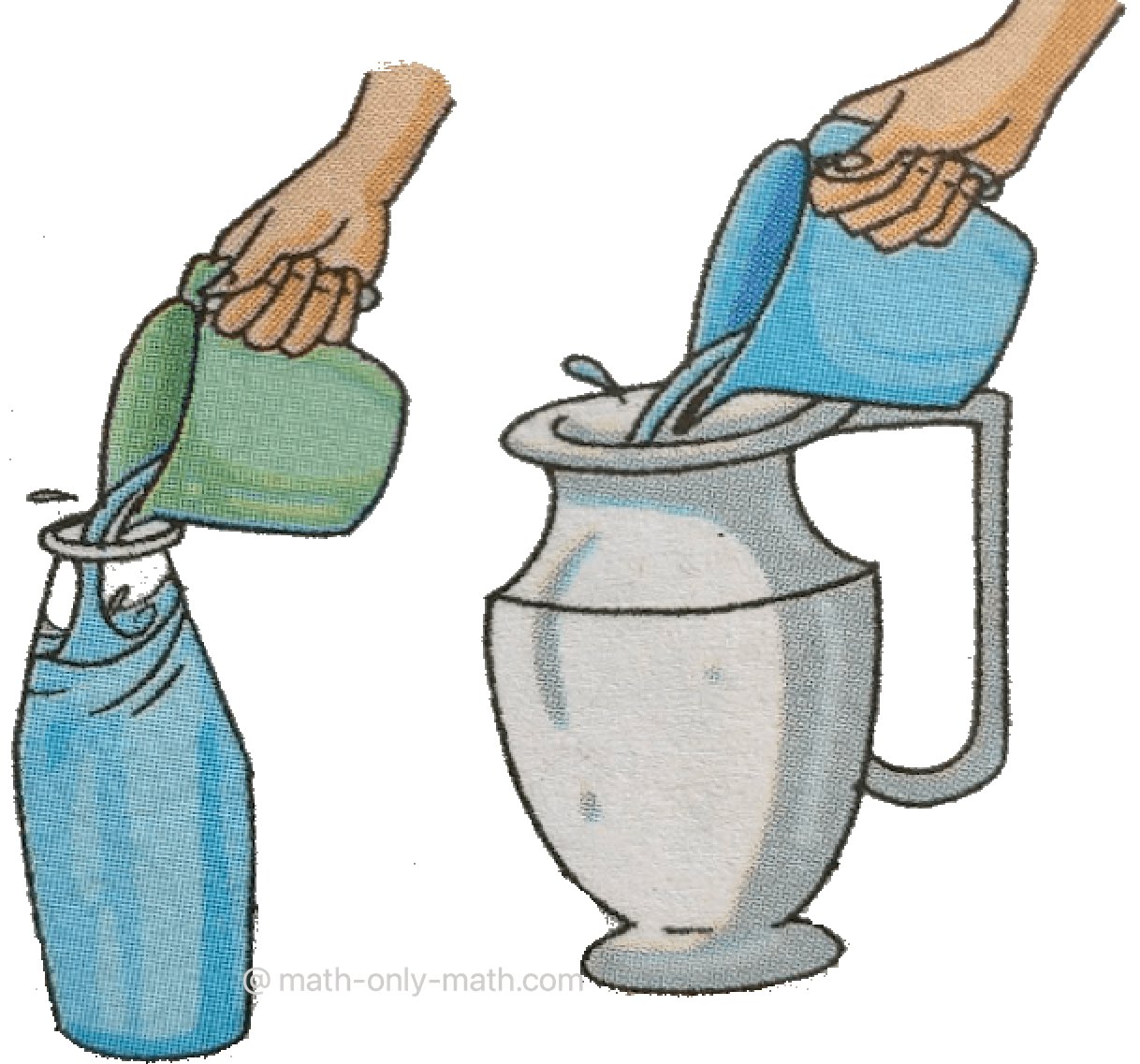
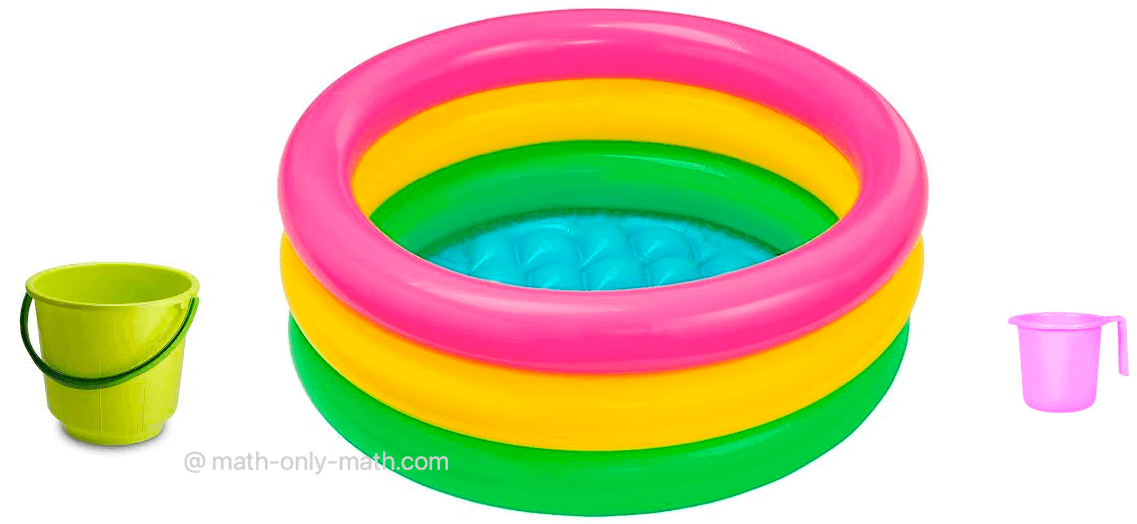
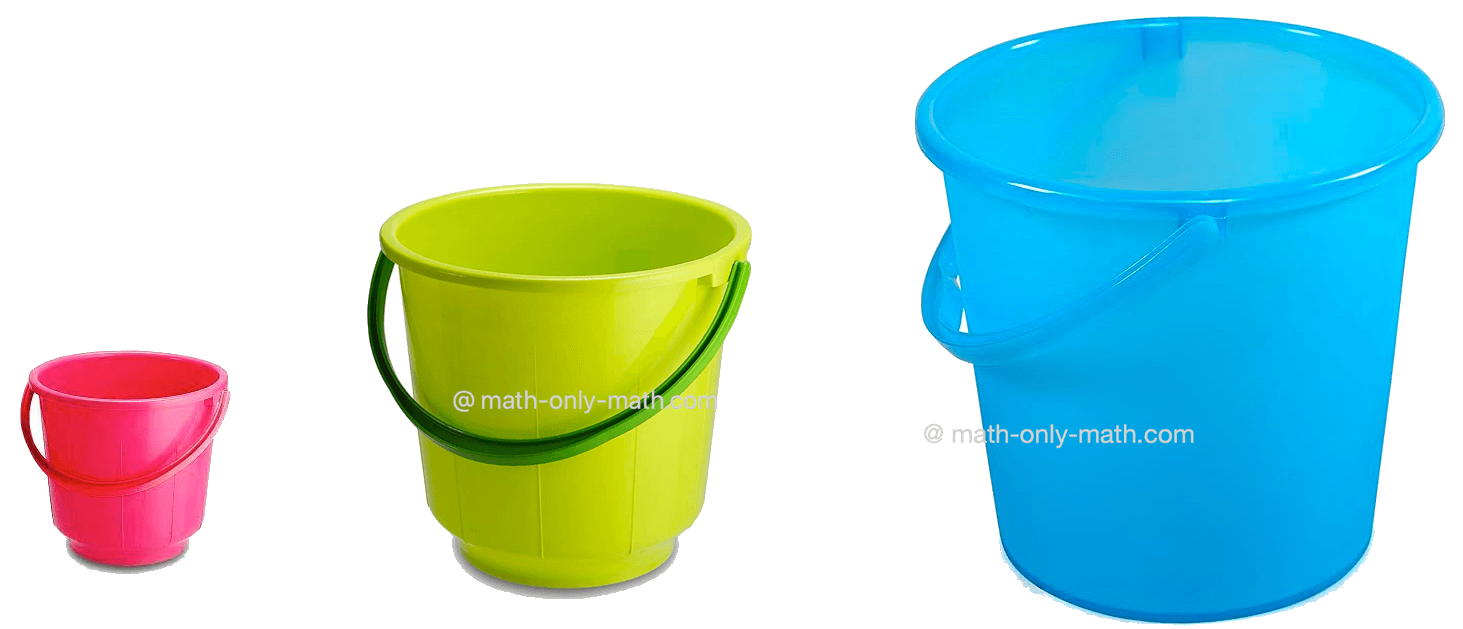
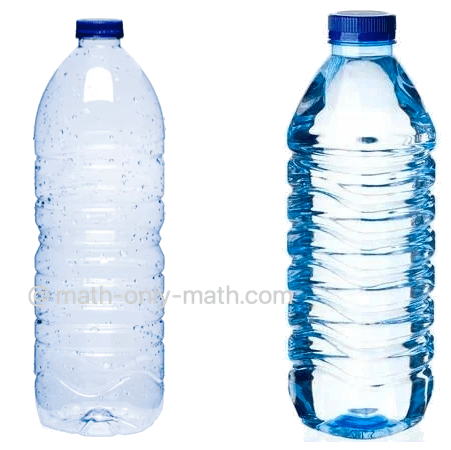
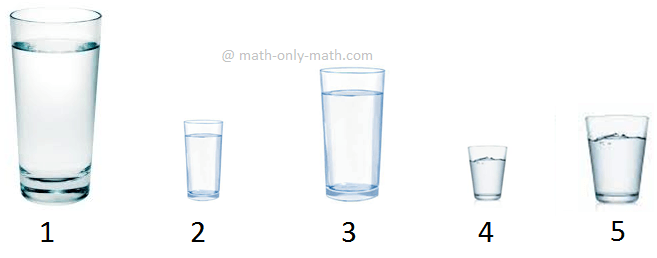
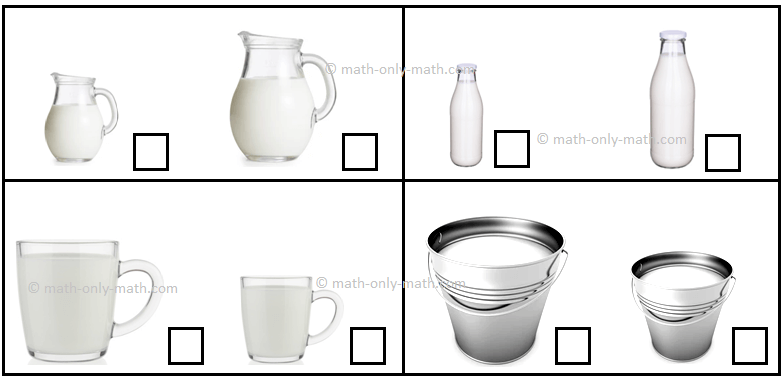

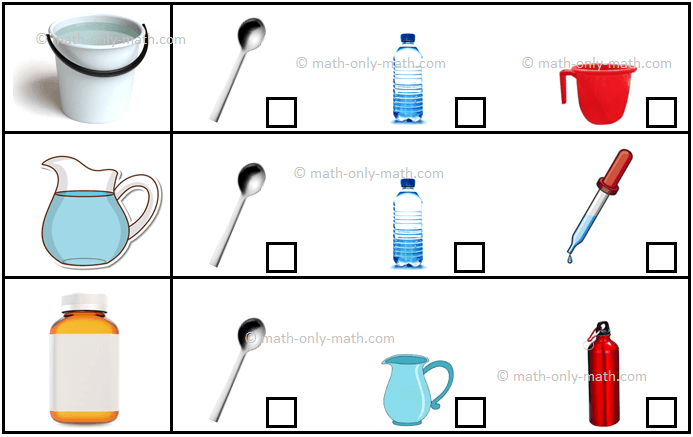



New! Comments
Have your say about what you just read! Leave me a comment in the box below. Ask a Question or Answer a Question.